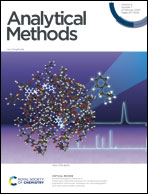Recent advances in fluorescence resonance energy transfer-based probes in nucleic acid diagnosis
Abstract
Nucleic acid diagnosis is a method that diagnoses human conditions and diseases by directly exploring the existing states or defects of nucleic acids using theoretical and technical approaches from molecular biology. The detected genes are either endogenous (the body's own genes) or exogenous (such as viruses and bacteria). The former is used to diagnose genetic lesions and the latter is used to diagnose pathogenic infections. Fluorescent hybridization probes based on the principles of fluorescence resonance energy transfer (FRET) and the complementary pairing of nucleic acids have been widely used in nucleic acid detection due to their high sensitivity and selectivity, ease of design and synthesis. These probes have been extensively studied and modified for different applications. Traditional fluorescent hybridization probes include molecular beacons (MBs) and binary probes (BPs). Many new fluorescent hybridization probes have been derived to improve the sensitivity of the traditional probes by adjusting their structure, combined with amplification techniques and novel nanomaterials. This review describes the applicability and advantages of various hybridization probes that utilize novel and inventive designs.



 Please wait while we load your content...
Please wait while we load your content...